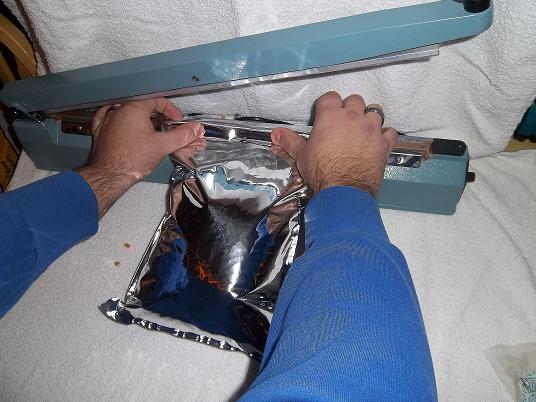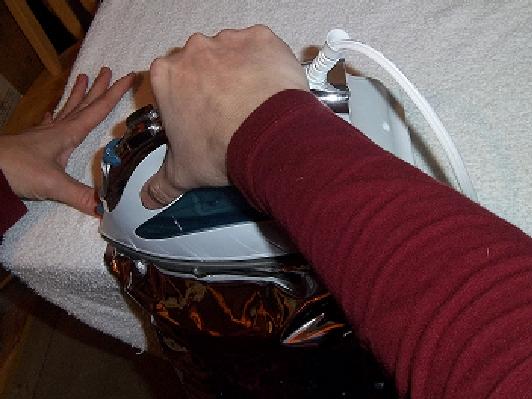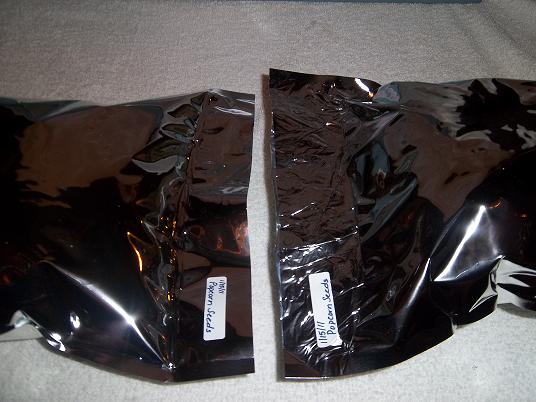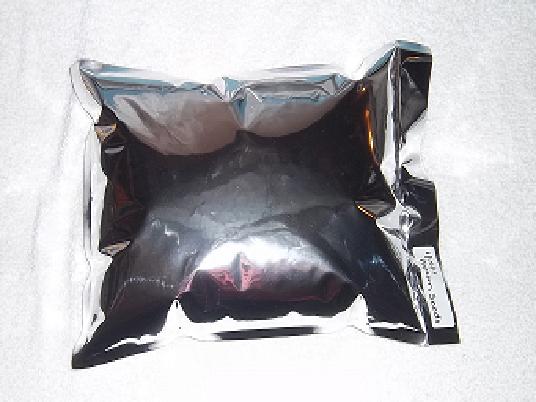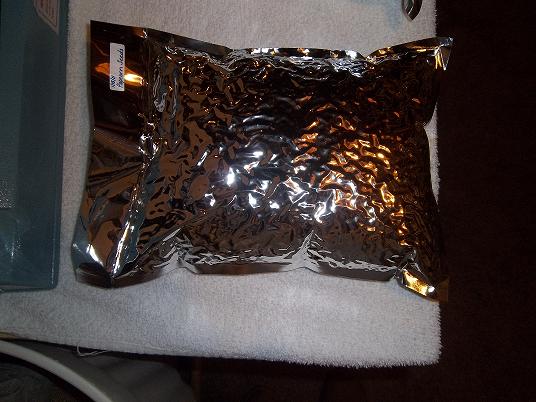In this section I’ll explain the enemies of food storage and how to mitigate them. I’ll also cover how to properly store food for LTS (Long Term Storage).
The five dangers of food storage are; heat, light, oxygen, moisture and pests. Minimizing the effects of these things will greatly increase the storage life of food.
Heat
Temperatures between 40 degrees and 72 degree Fahrenheit are ideal for food storage. For every 18 degrees above 72, the food loses up to half its nutritional value. If the food is exposed to temperatures over 72 degrees for an extended amount of time it can lose its color, texture and taste.
Light
Keep things in a dark space if at all possible, light can affect the appearance and taste of food. Mylar bags and food grade buckets will also help here.
Oxygen
When fats oxidize they turn rancid. Keeping your food in an oxygen free environment will prevent this, as well as kill pests that may be in the food. You can remove oxygen with oxygen absorbers in an airtight bag. I’ll cover how to know how many to use below.
Moisture
Moisture can take the form of humidity, condensation or even a water pipe breakage. To mitigate this I keep much of my preps in Mylar bags and then I put the Mylar bag in a food grade bucket. You can also add a desiccant to the inside of the Mylar for added moisture removal. I try not to have any food with cardboard packaging out in the open, as it is susceptible to accidents involving liquids, such as broken pickle jars, broken pipes or the “Not Me Ghost”, you know, children.
Pests
Pests range from larvae in bulk food to mice in your food storage area. There are a few ways to deal with each. For larvae you can stick that bag of rice, beans or whatever in your freezer for a couple of days. This will kill any bugs, larvae or eggs. I used to do that, but it’s time consuming, my freezer isn’t that big and it’s usually full. I found, on a forum, that the simple act of removing the oxygen would kill any pests in the food. This made sense and they were steps we were already doing. We have not had any problem with pests in any of the food we have stored this way. If you want to make sure, feel free to do both. I have also read that Bay Leaves will keep pests away and some people add them to the inside of the Mylar bag as well as the inside of the food grade bucket.
Mice
We keep a very clean house but the little buggers always seem to come in, especially in the fall when it starts to get cold. There are a few ways to deal with them but I prefer traps. With poison there’s a possibility they’ll make it to a spot that you can’t find before they die, which could cause a smell. Glue traps are about as inhumane as anything I can imagine. I prefer spring traps. I used to use the old fashioned ones, but they’re so touchy and can be a pain to set. I started using JAWZ Mouse Trap and I really like them. They are incredibly easy to set, still go off when “visited” and mouse extraction is quick and easy.
The “How To” of Storing Your Own Bulk Food.
This process seemed a little daunting when I began to research it. In truth it was a bit frustrating the first few times we put up some bulk food. The reason it was frustrating had to do with the process we were using. I had seen a video about using a household vacuum and a household iron to seal the bag. It worked but was an exercise in frustration. After the food and oxygen absorbers were added, the bag was heat sealed, save a section about an inch long. One end of a tube was inserted into the remaining hole, while the other end was connected to the vacuum. My wife was at the ready with the iron. I would turn the vacuum on, removing the air. I would remove the tube and my wife would seal the remaining hole. It was effective, but as said, it got frustrating. It was definitely a team building exercise!
The process we use now is much better, we purchased a heat impulse sealer,this makes things easier, but it would still work with an iron. We got rid of the vacuum completely. We achieve the airtight seal by adding more than enough oxygen absorbers for the size of the container. I’ll explain the process below.
You might be thinking why not use a vacuum sealer? The bags that come with vacuum sealers are clear. That makes the food susceptible to light. They are also not as heavy duty as Mylar and I also don’t think that they are an oxygen barrier, whereas Mylar is. So why not use Mylar bags with a vacuum sealer? We tried, the vacuum sealer wouldn’t work on Mylar. I could get the vacuum to engage but it couldn’t form a seal to remove the oxygen. I did some research on-line and found that you can make a “sleeve” out of the clear plastic bag and slide it over the Mylar. Remember me saying that the first few times were frustrating? The vacuum sealers might be fantastic for use with the bags made for them, which are frequently used in freezing, but for long-term storage I highly recommend Mylar and the process I’ll explain below.
Let me cover the needed components first;
Mylar Bags
Mylar is a clear material made from polyester resin. The balloons you see at grocery stores or party stores are made of Mylar. The Mylar bags used for food storage have a layer of foil on them. They come in varying levels of thickness. I have seen 3.5 mil – 7 mil. I have seen the recommendation to use thicker Mylar bags for things like pasta because the pasta can puncture the bag when the oxygen is absorbed and the bag tightens around it.
Oxygen Absorbers
Oxygen absorbers are made of iron oxide. When oxygen is present the iron oxide rusts as it absorbs the oxygen. When all of the oxygen has been absorbed the rusting stops. Every time I have purchased oxygen absorbers, they have come in a 50 pack, in sealed plastic packaging. I always have a canning jar on hand to put them in. I put the jar lid on as soon as I take them out of the packaging. I remove the lid as needed. This will keep the absorbers from absorbing too much oxygen. When I am done putting food up I can just leave the absorbers in the jar.
Sorbent Systems recommends that if you are filling a:
5 or 6-gallon bag, that you use 1500cc-2000cc oxygen absorber.
3-gallon bag should use 1000cc
1-gallon bag or #10 can should have 300cc.
You can mix sizes to get to the recommended amount of absorption. Use 1 1000cc or 4 300cc. It’s a bit of overkill but it’s better to go a little overboard than to not have enough.
Keep in mind that since we’re not using a vacuum, the package will not be “solid” right away. Once the oxygen absorbers have had some time to work the effect is as good as using a vacuum and a lot less frustrating.
Heat Source
As I mentioned, we now use an impulse sealer, but you can do this with an iron as we have in the past.
Food Grade Buckets
Here is an article that explains what food grade plastic is. Most food grade buckets have a “2” in the recycle symbol. You can purchase brand new food grade buckets on-line. The prices often range from $7-$10 (depending on size) with the lid included. However, you can often get them locally cheaper or even completely free.
I purchased the bulk of mine from a bakery for $2.00 (including the lid). I also got some free from the bakeries in the local grocery store, Sam’s and Costco. I had to endure a few odd looks but for the $10 I saved, I’ll deal with it. We washed these buckets thoroughly with hot water and dish soap.
Keep in mind that there is a chance that whatever was in the bucket may leave it’s scent on whatever you put in the bucket. If you get a bucket that smells like pickles, there isn’t much you’re going to be able to do to get the smell out. You may be able to purchase something to wash it with, but once you factor in the cost of that product and the time, you would probably save money by buying a new bucket.
Do you have to use food grade buckets, or will any 5 gallon bucket suffice?
If you’re storing the food in Mylar than the food will only come in contact with the Mylar bag, which is food grade. If you’re going to have the food loose in the bucket then yes, you should use a food grade bucket.
Gamma Seal Lids
As you’ll soon discover, taking the lids off of these buckets can take a toll on your fingernails and knuckles. Gamma seal lids go on like a normal lid but they also have an inner lid that screws off, leaving the outer sections attached to the bucket.
I didn’t go the gamma seal route. Instead, I have a Bucket Wrench. I didn’t use one at first but after I had a few fingernails bent back I ordered one.
Another possible storage option:
Something that I learned about from Jack on The Survival Podcast is Paint Style Cans w/ Gold Phenolic Lining; these are FDA approved and are evidently great for storage. You can put the food right in the can, add an oxygen absorber and put the lid on.
The process of storing food in Mylar:
Step One: Get all of the needed items in one place:
-Item to be stored.
-Mylar bags.
-Oxygen absorbers.
-Heat Sealer.
-Permanent Marker or labels and pen.
-Scoop (in this case it was a large plastic cup.)
-Food Grade bucket.
Step Two: Add an oxygen absorber and start adding food to the Mylar bag. I usually add an oxygen absorber at the bottom of the bag, the middle and near the top. Remember that the amount of oxygen absorbers you’ll need to add are dependent on the size of the bag you are using.
Notice the headroom left at the top, you’ll need to leave room so when you lay it flat, the contents don’t spill.
Step Three: Seal the bag. The left picture is of an impulse seal. The right is of a household iron seal. The picture below them is a side-by-side comparison of the two. Leaving the iron on the bag for more then a second or two can cause the bag to melt on the seal line, leaving a hole.
Step Four: Label the Mylar bag with content and date stored. Writing on the bag is fine; the labels are just easier to read.
Step Five: Put the filled Mylar bag in the bucket. I usually leave the lid off so that I can check to make sure the oxygen has been removed from every bag. We will occasionally get one that has to be repacked with a new bag and oxygen absorbers.
Here are before and after pictures, the left (or top, depending on your monitor resolution) one is right after sealing, before the oxygen absorbers have done their work. The right one is 12 or so hours later, notice how the bag is dimpled, that is the easiest indication that the oxygen is removed.
Once you’re sure the oxygen has been removed from all bags, you can put the lid on. I can get three, one gallon bags in the 3-4 gallon buckets.
One of the mistakes we made in the beginning was using Mylar bags that were large enough to fill the entire bucket. The problem with this is that once you open the large bag, all of the contents then have to be used, or you have to reseal them. We now use smaller one-gallon bags and put three in the bucket.
Here are some resources for purchasing food storage supplies. Interteck Packaging and Sorbent Systems carry mainly Mylar, oxygen absorbers and the like, while Emergency Essentials carries a wide variety of preparedness supplies.
2-14-11 Update
I am in need of more oxygen absorbers so; I went to the three sites I have listed and, well lets just say I found a much cheaper source. Honeyville Grain at the bottom of the page. Nearly half of one of the sites listed. I’m going to leave the others, as they are a good source for other things.
Here are the links to the other food storage articles.
Food Storage Part One: Why Store Food And The Rules For It.
Food Storage Part Two: The Kind Of Foods That You Can Store
Food Storage Part Three: Shelf Life of Staples.
Food Storage Part Four: The Process and Enemies of Food Storage.
Food Storage Part Five: How much food should you store and where should you put it all?
Food Storage Part Six: Tips On Stocking Up and Affording it all.
Food Storage Part Seven: Food Boredom to Survival Cooking .
Please click here to vote for Prepared Christian as a top Prepper site!
If you liked this article please think about sharing it on the social media listed below, thanks!



